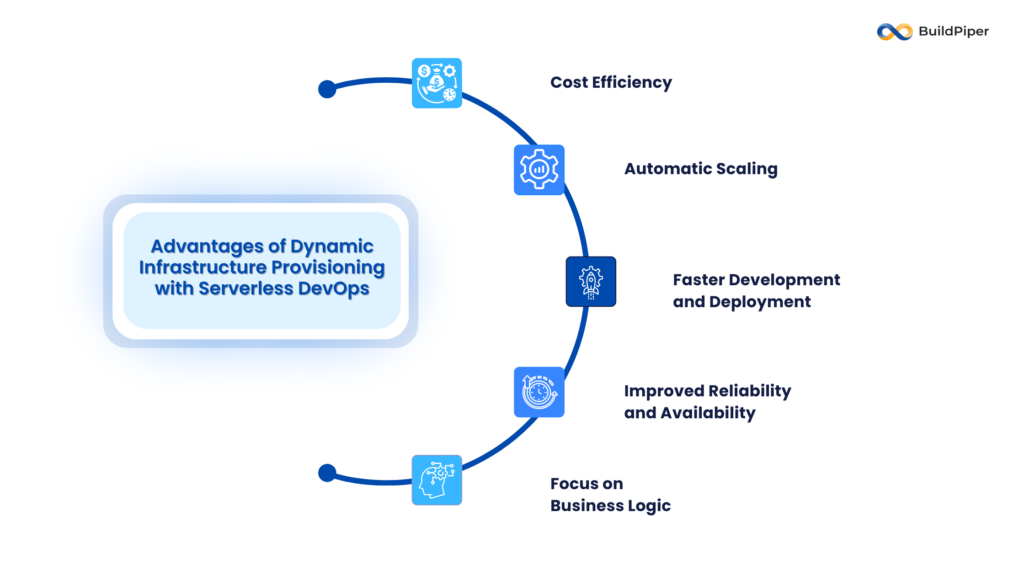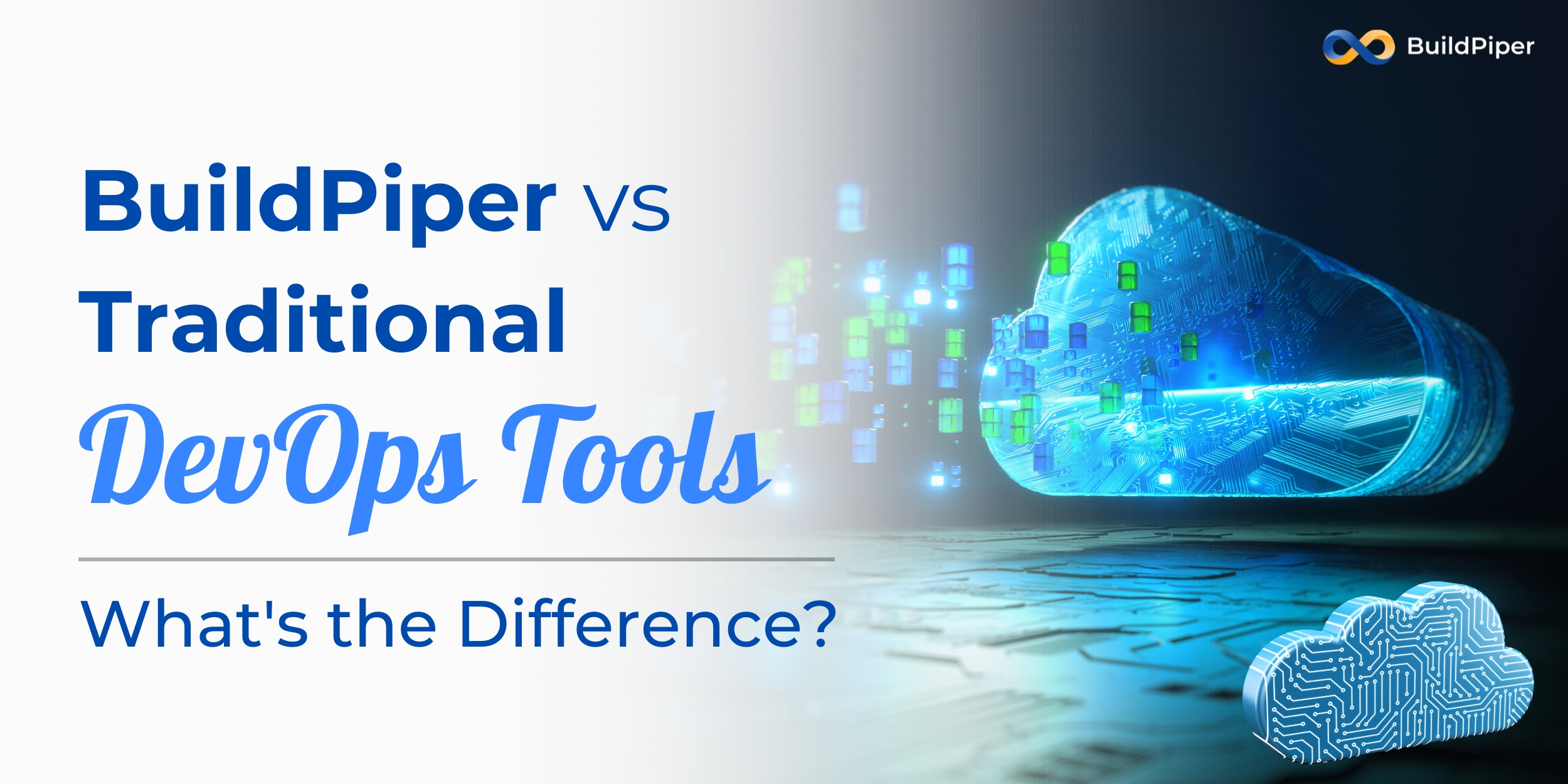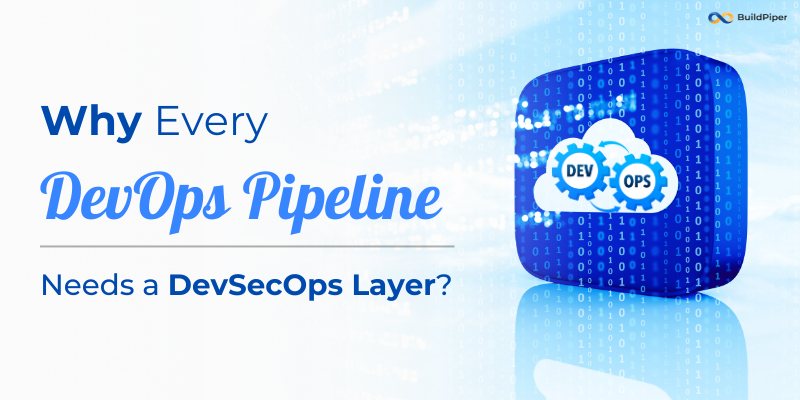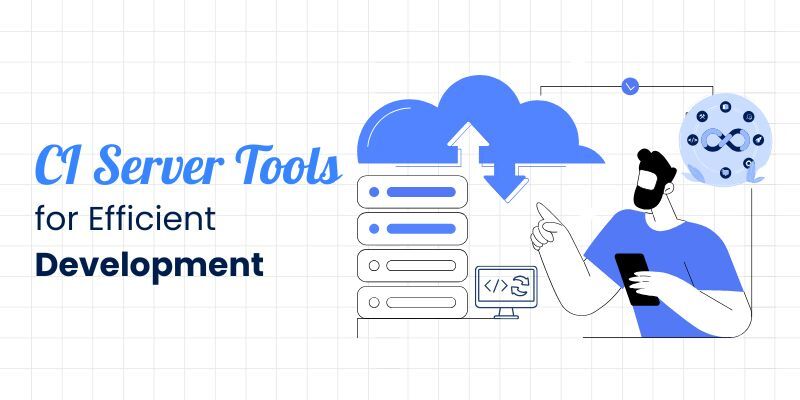
What if managing your infrastructure felt less like a chore and more like an enabler for your team? With Serverless Infrastructure Automation and Dynamic Infrastructure Provisioning powered by DevOps, this is now a reality. By embracing serverless DevOps, teams can leverage the power of serverless architecture combined with DevOps best practices. This powerful combination empowers teams to build smarter applications, deploy faster, and scale effortlessly.
What is Serverless DevOps?
Serverless DevOps is a combination of serverless computing and DevOps practices that helps organizations build and deploy software faster and more efficiently.
- Serverless Computing
Serverless architecture abstracts away the need to manage servers and infrastructure. In this model, developers deploy code directly to the cloud provider’s platform (such as AWS Lambda, Google Cloud Functions, or Azure Functions), automatically providing, scaling, and managing the underlying infrastructure.
- DevOps
DevOps focuses on automation, collaboration, and continuous integration/continuous delivery (CI/CD) to speed up the software development lifecycle. It encourages breaking down silos between development and operations teams to deliver high-quality software faster.
When combined, Serverless DevOps offers a unique way of automating both infrastructure provisioning and deployment processes, allowing teams to build, test, and deploy applications without worrying about server management.
Must Read – The Evolution Of CI/CD Pipelines In Kubernetes-Native Environments
Key Benefits of Dynamic Infrastructure Provisioning with Serverless DevOps
Dynamic infrastructure provisioning with Serverless DevOps offers several key benefits for modern software development and operations. Here are some of the primary advantages:
- Cost Efficiency
One of the most compelling reasons for adopting Serverless DevOps is cost savings. In traditional server-based architectures, resources like virtual machines and storage are provisioned in advance, often leading to over-provisioning or under-provisioning.
Serverless platforms charge based on actual usage (e.g., time your function runs or the number of invocations), eliminating the need to maintain idle servers. This dynamic allocation of resources helps reduce overhead costs, particularly for variable or unpredictable workloads.
- Automatic Scaling
Traditional infrastructure scaling often requires manual intervention or complex configurations. With Serverless DevOps, scaling is automated. Cloud providers automatically adjust resources in real-time to meet demand, whether it’s a surge in traffic or a period of low usage.
- Faster Development and Deployment
Serverless DevOps accelerates the development lifecycle by automating many infrastructure management tasks. Developers can focus on writing code while the cloud provider handles provisioning, scaling, and maintenance. Code can be deployed in real-time through DevOps automation and CI/CD pipelines, which reduces the time needed to go from development to production.
- Improved Reliability and Availability
Since cloud providers manage serverless applications, the underlying infrastructure is often distributed across multiple regions, ensuring high availability and fault tolerance. Providers also implement automatic load balancing and seamlessly handle resource failures, improving the application’s overall reliability.
- Focus on Business Logic
With serverless platforms, developers don’t need to worry about provisioning infrastructure, setting up servers, or managing operating systems. This reduces the complexity of managing cloud-native infrastructure, allowing developers to dedicate more time to writing and optimizing the application’s core business logic.
Don’t Miss This Blog – The Role Of Service Discovery In Modern Microservices Architectures
How Dynamic Infrastructure Provisioning Works in Serverless DevOps
Dynamic infrastructure provisioning in Serverless DevOps refers to automatically allocating and scaling the infrastructure resources needed for application development, testing, and deployment without requiring manual intervention or dedicated servers.
- Cloud Provider Integration
Serverless platforms like AWS Lambda, Google Cloud Functions, and Azure Functions abstract the underlying infrastructure. These platforms automatically allocate resources based on the application’s demand. They also integrate with various DevOps tools, such as CI/CD pipelines and version control systems (like Git), to streamline the deployment process.
- Infrastructure as Code (IaC)
Infrastructure as Code (IaC) plays a crucial role in automating the provisioning and configuration of cloud resources. IaC tools like Terraform, AWS CloudFormation, and Serverless Framework allow developers to define infrastructure through code.
This makes it easier to manage and version infrastructure alongside the application code. Developers can specify resources like databases, storage, and compute functions in the same repository as the application code, ensuring consistency and repeatability.
Did You Know?
Exciting growth ahead! The serverless computing market is projected to jump from USD 21.9 billion in 2024 to USD 44.7 billion by 2029, fueled by a strong CAGR of 15.3%. Get ready for this tech revolution!
- Serverless Infrastructure Automation
The key feature of Serverless DevOps is serverless infrastructure automation, which eliminates the need for manual resource provisioning. With serverless infrastructure automation, cloud resources are provisioned dynamically as needed, scaling up or down without human intervention.
- CI/CD Automation
Continuous Integration (CI) and Continuous Deployment (CD) pipelines are key components of DevOps that automate testing, integration, and deployment. With Serverless DevOps, these pipelines automatically provide resources needed for application deployment, such as API Gateway setups, databases, and serverless functions.
- Monitoring and Management
Serverless platforms provide built-in monitoring tools that track the health of applications and the resources they consume. Tools like AWS CloudWatch, Google Cloud Operations, and Azure Monitor provide real-time insights into serverless functions’ performance, usage, and costs.
DevOps Automation with BuildPiper
BuildPiper is your go-to solution for DevOps automation. It simplifies the process of automating Infrastructure as Code (IaC) and serverless infrastructure provisioning, ensuring faster deployments and better resource management. By integrating seamlessly into CI/CD pipelines, BuildPiper eliminates manual tasks, increases efficiency, and ensures that your infrastructure scales dynamically as needed.
Frequently Asked Questions
Q. What is Serverless DevOps?
A. Serverless DevOps combines serverless computing and DevOps practices to automate infrastructure provisioning and application deployment, allowing faster software delivery without managing servers.
Q. How does dynamic infrastructure provisioning work in Serverless DevOps?
A. Dynamic infrastructure provisioning automatically allocates and scales cloud resources based on application demand, without manual intervention, using cloud platforms and DevOps tools.
Q. What are the cost benefits of Serverless DevOps?
A. Serverless DevOps is cost-effective as it charges based on actual usage, avoiding over-provisioning and reducing overhead costs compared to traditional server-based infrastructures.
Q. How does Serverless DevOps improve scalability?
A. Serverless DevOps automatically scales infrastructure in real-time, adjusting resources as needed without manual intervention and ensuring efficient handling of traffic fluctuations.
Q. What role does Infrastructure as Code (IaC) play in Serverless DevOps?
A. IaC allows developers to define and manage cloud infrastructure using code, automating the provisioning and configuration of resources and ensuring consistency and repeatability.
Q. What is BuildPiper, and how does it help with DevOps automation?
A. BuildPiper is a solution that simplifies DevOps automation by streamlining Infrastructure as Code (IaC) and serverless infrastructure provisioning. It integrates seamlessly into CI/CD pipelines, automating deployments, improving efficiency, and ensuring dynamic infrastructure scaling.




